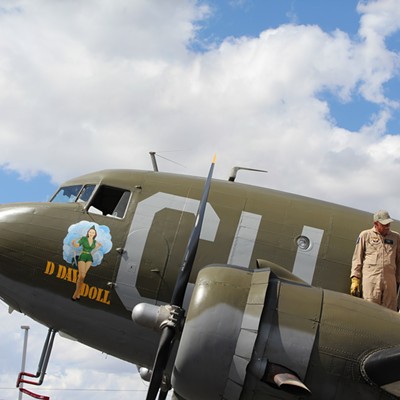"S.P. turned the economic wheel with its jobs," 58-year old Tucson native Bill Kalt observes, "and also provided musical attractions into the 1930s, sponsored a baseball team which represented Tucson at least through 1910, filled social clubs with its members, and certainly politically ran Pima County for a while."
During the steam era, Southern Pacific employees lived in homes all over town, especially in the Armory Park, Barrio Anita and Iron Horse neighborhoods downtown. For a while, some Mexican-American railroad workers were even housed in boxcars located east of Second Avenue.
Wishing to honor the people who labored for Southern Pacific during this time as well as their families, my friend Kalt within three months will publish a book, Tucson Was a Railroad Town: The Days of Steam in the Big Burg on the Main Line.
Kalt also wanted to include pictures of these people, so the 300-page book will contain more than that number of never-before-published historic photographs. "If someone worked for the railroad during the steam era," he observes, "there's a good chance their picture will be in the book.
"The way Tucson was is shown in the book," Kalt continues, "before it became buried under a rushed-around, Web-searching world. It was a much more personal, face-to-face community then, and the railroad bonded people together, because so many of them worked for S.P. or traveled by train."
Kalt, a retired teacher, began his odyssey to complete this labor of love more than 20 years ago, because his home had a swamp cooler. "I needed some relief in the summer," he remembers, "and libraries were a great retreat from the heat."
Delving into his family history, Kalt learned things about his great-grandfather, who came here from Texas and went to work for Southern Pacific in 1904. He was a "pumper" for the company, daily commuting by train from his Tucson home to fill the water tank at the Rillito while also playing in the local S.P. band.
While learning about his family's background, Kalt discovered that he wanted to find out more about the city in which they lived. This led to 15 years of periodic research, or "recreation" as Kalt laughingly refers to it.
"I realized Tucson was influenced so much by the railroad," he says of his research work. Part of this impact was because in the early part of the 20th century, Southern Pacific had close to 1,000 people on the payroll in Tucson, making it not only by far the largest employer in a city of 10,000 inhabitants, but also its primary property taxpayer.
Eventually, Kalt interviewed almost 50 retired railroad workers. Their stories make up much of the book as they describe what it was like to be an engineer, fireman, brakeman or conductor on a train, as well as what it was like to work in the S.P. maintenance shops along south Third Avenue.
"These interviews added juicy parts to the story," Kalt says. "Plus, they gave me the title for the book.
"The stories from Lordsburg, N.M., are my favorite," Kalt reflects. It was there that crews from Tucson would depart their train and await a return trip home.
"The workers had wild times in Lordsburg," Kalt says, "with all-night gambling, women and debauchery. As one (retired) engineer told me, 'There were no angels on the railroad.' ... History is more fun than fiction, because it's what happened."
One of the workers Kalt interviewed was Sid Showalter, who was employed by the railroad for 31 years. He believes: "S.P. put Tucson on the map. It provided far more jobs before Davis-Monthan Air Force Base or Raytheon."
Showalter worked mostly as a switchman for Southern Pacific, helping to assemble freight trains before they left town. He says he wasn't looking for a job with S.P. before he was hired in 1951, but was talked into taking it.
During the first 12 years of Showalter's S.P. employment, he recalls, he had only seasonal work and had to supplement his income by doing automobile body and fender repair. But eventually, he says, he could depend exclusively on the railroad.
Before the railroad yard was moved in the 1960s to a spot south of 22nd Street and east of Campbell Avenue, Showalter remembers a time when there were 15 sets of tracks near downtown's depot used to put trains together, compared with two now. Showalter also recalls the importance of Pacific Fruit Express, a produce-shipping company jointly owned by Southern Pacific and Union Pacific railroads which was also a major player in the local economy.
It is the legacy of people like Showalter that Kalt's book will record for posterity. "It was fun to do," he states of his time-consuming effort, "because out of our history, we enter our future."












